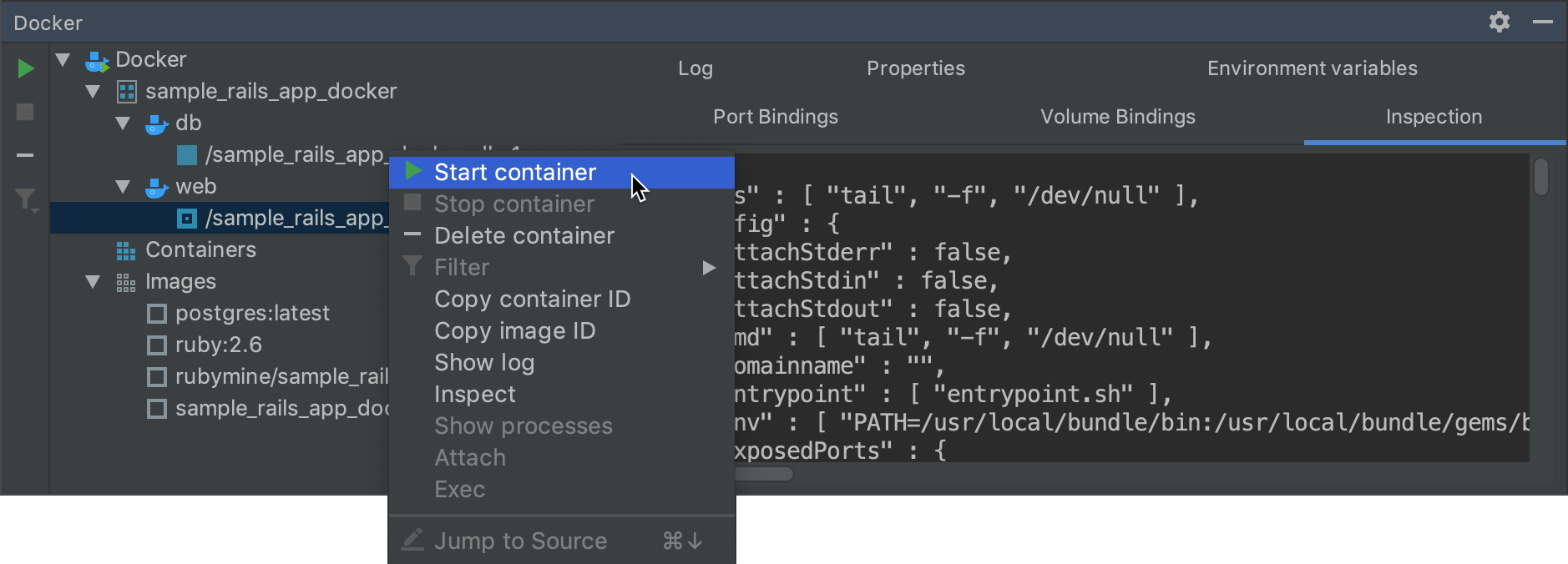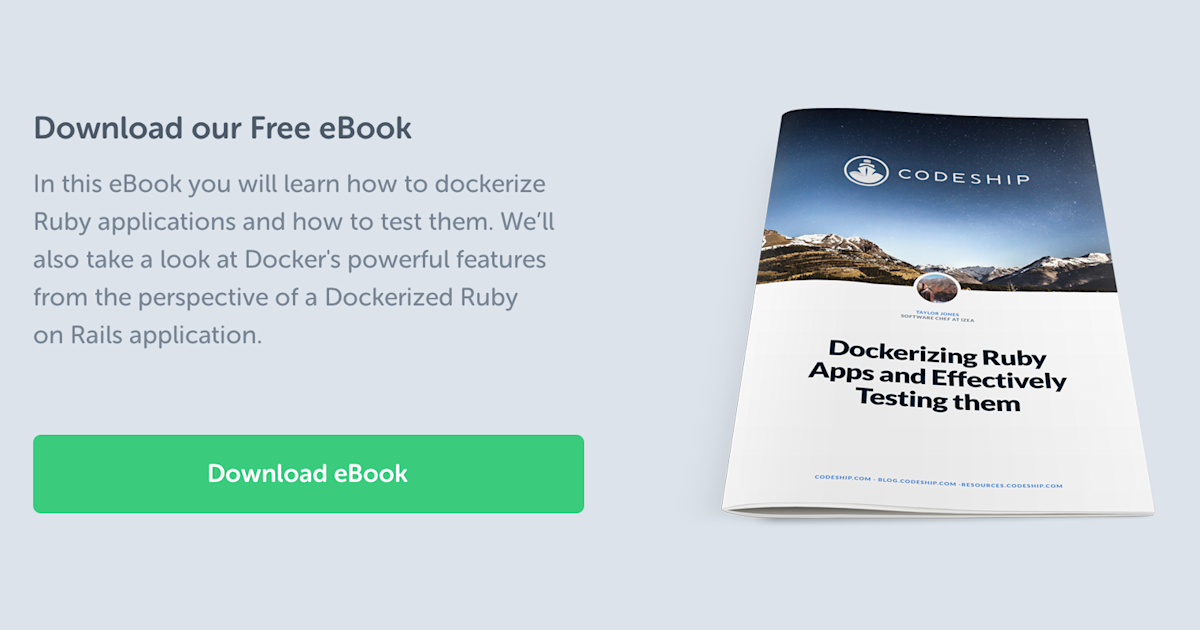


Docker Ruby Gem Install
Finally, docker-compose.yml is where the magic happens. This file describes the services that comprise your app (a database and a web app), how to get each one’s Docker image (the database just runs on a pre-made PostgreSQL image, and the web app is built from the current directory), and the configuration needed to link them together and expose the web app’s port.
- This example repository runs two Docker containers built from the same image: a Sinatra application; the Sinatra application test suite; After specifying in the.travis.yml to use Docker (with services: - docker) and Ruby (with language: ruby), the beforeinstall build step pulls a Docker image from carlad/sinatra then runs.
- RUN go get -d -v && go install -v && go build EXPOSE 3000 CMD './api' Starting from the top, you’ll find that the FROM statement is now golang: 1.10. This means Docker will fetch a pre-built Go image from Docker Hub that has all the needed Go tools already installed. Now, once again, build the Docker image with.
- As others have noted, in general use the -v flag for the gem install command. If you're developing a gem locally, after cutting a gem from your gemspec: $ gem install gemname-version.gem Assuming version 0.8, it would look like this: $ gem install gemname-0.8.gem.
Install Gem In Docker
Developing with docker under OSX/ Windows is a huge pain, since sharing your code into containers will slow down the code-execution about 60 times (depends on the solution). Testing and working with a lot of the alternatives made us pick the best of those for each platform, and combine this in one single tool: docker-sync
docker-sync is:
- Support for OSX, Windows, Linux and FreeBSD
- Runs on Docker for Mac, Docker for Windows and Docker Toolbox
- Uses either native_osx, unison or rsync as possible strategies. The container performance is not influenced at all, see performance
- Very efficient due to the native_osx concept
- Without any dependencies on OSX when using (native_osx)
- Backgrounds as a daemon
- Supports multiple sync-end points and multiple projects at the same time
- Supports user-remapping on sync to avoid permission problems on the container
- Can be used with your docker-compose way or the integrated docker-compose way to start the stack and sync at the same time with one command
- Using overlays to keep your production docker-compose.yml untouched an portable
- Supports Linux* to use the same toolchain across all platforms, but maps on a native mount in linux (no sync)
Besides performance being the first priority for docker-sync, the second is, not forcing you into using a specific docker solution. Use docker-for-mac, docker toolbox, VirtualBox, VMware Fusion or Parallels, xhyve or whatever!


Documentation, Installation, Configuration
All the information, tutorials and best practises are provided in the Documentation
